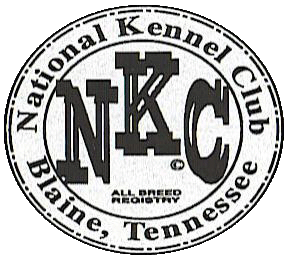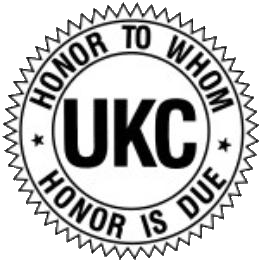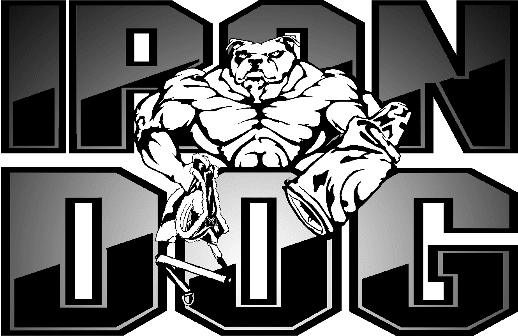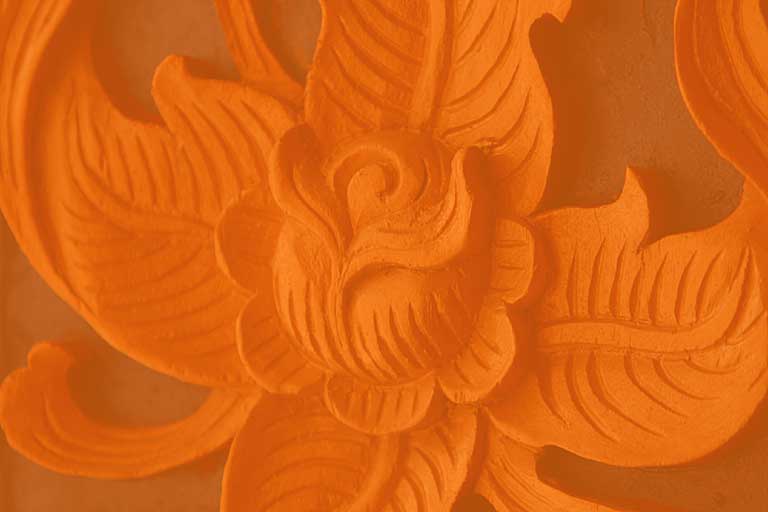
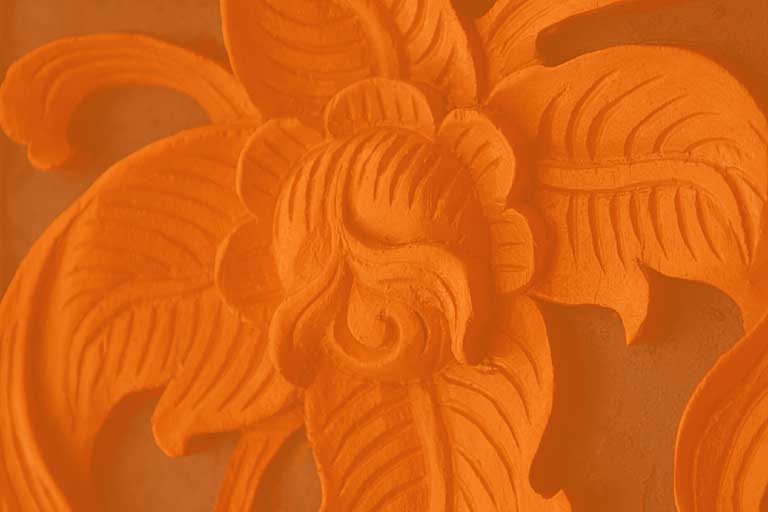




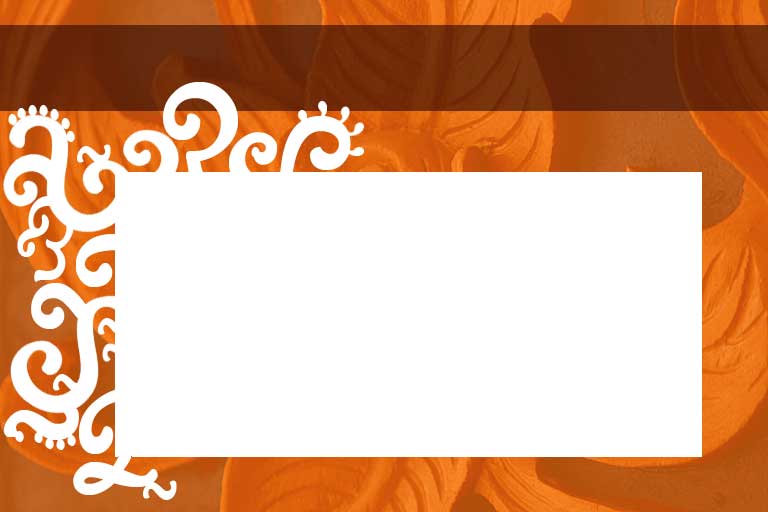



Thanksgiving Weekend 11/27/09-11/29/09
UKC Information
3 Day, 6 Show UKC All-Breed Conformation
Plus UKC Weight Pull and Rally Obedience
November 27-29, 2009
Judges: Alan Krenek
Event Secretary: Dennis Blickenstaff, denblick@pacbell.net
PO Box 96, Gold Run CA 95717 (408) 799-5419
This is a wonderful opportunity to show under UKC, with tons of opportunities for points! Six shows, with six different judges in one weekend. If you are new to UKC this is a great place to get started showing under this well respected registry.
To register your American Bulldog with the UKC you can fill out their single dog registration application and send it in accompanied by registration from an approved registry (NKC, ABA). You can also get a Temporary Listing number if you decide to enter which will arrive sooner then a permanent number. 
UKC Weight Pull - more information to come
UKC Rally-O - more information to come
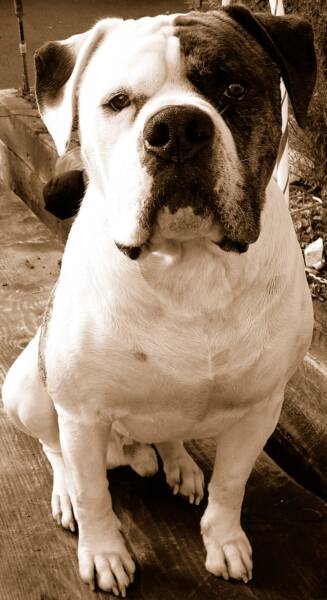
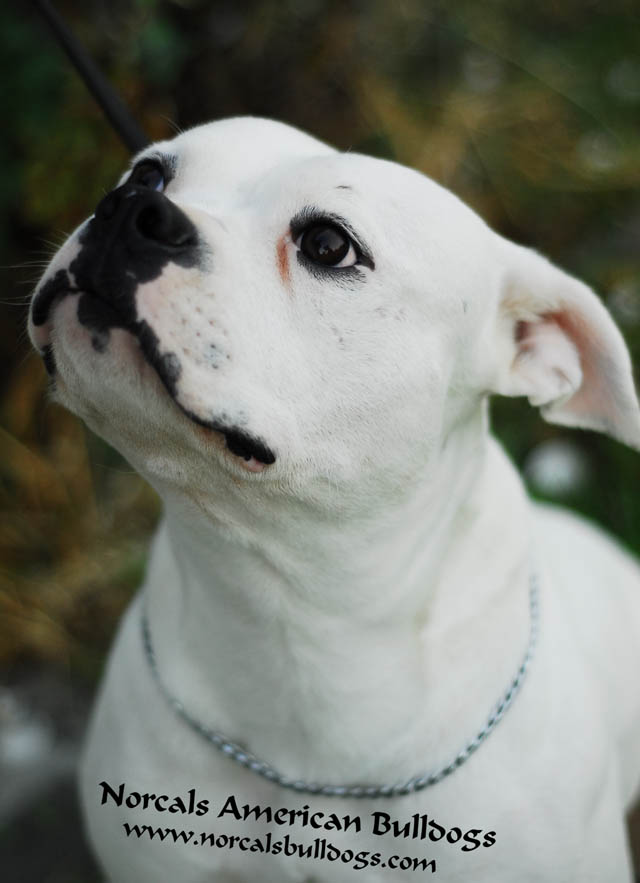
About UKC
From the UKC website
"Established in 1898, the United Kennel Club is the largest all-breed performance-dog registry in the world, registering dogs from all 50 states and 25 foreign countries. More than 60 percent of its 12,000 annually licensed events are tests of hunting ability, training and instinct. UKC prides itself on its family-oriented, friendly, educational events. The UKC has supported the "Total Dog" philosophy through its events and programs for over a century. UKC events are designed for dogs that look and perform equally well.
The programs at UKC include Obedience Trials, Agility Trials, Weight Pull Events, Terrier Races, Earth Work Events, Total Junior Program, Dog Sports (including Family Obedience), Coonhound Field Trials, Water Races, Night Hunts and Bench Shows, Hunt Tests for retrieving breeds, Pointing Dog Events, Beagle Events (including Hunts and Bench Shows, and Cur and Feist Squirrel and Coon Events and Bench Shows.
Rounding out the 'Total Dog' package, UKC Conformation Events are among our largest growing events. UKC dog shows are family events designed by and for the breeder-owner-handler. Professional Handlers are not eligible to exhibit dogs for others at UKC Conformation Events. At UKC dog shows, the emphasis is on the DOG, not the SHOW.
It is our firm belief that the right balance between performance and conformation results in healthier happier dogs for everyone. We are proud that we share that same philosophy with our growing number of dedicated participants.
Essentially, the UKC world of dogs is a working world. That's the way it was developed over a century ago, and that's the way it remains today."
Showing UKC for the Novice
If you are showing UKC conformation for the first time it might be a good idea to watch the first show of the weekend. In any one weekend there can be up to six shows so you will have plenty of opportunity to actually show your dog. While it is not required most UKC handlers dress up to show conformation; some will go as far as suit and a tie but it is more common to see casual business attire. I tend to dress as if I am going to a job interview which is a pretty good rule of thumb. As with NKC your dog should be well groomed and in good physical condition. Your dog should be on a show lead with a chain or nylon slip collar; I have personal found the show chains with a short 2' lead to be the most effective when showing ABs. The collar should not draw any attention to itself as you want the judge be looking at your dog not its leash and collar.
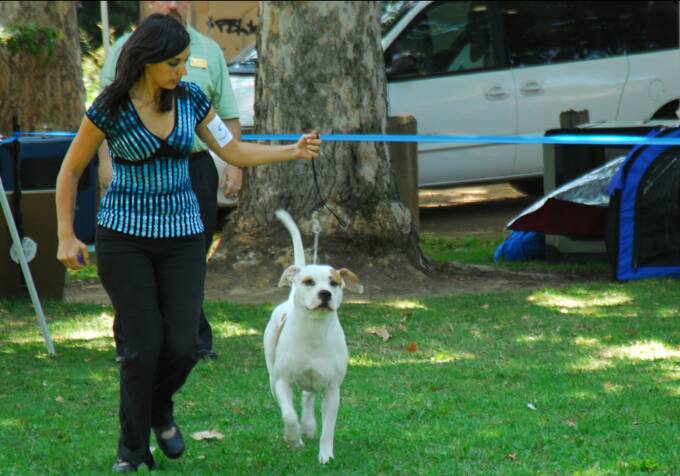
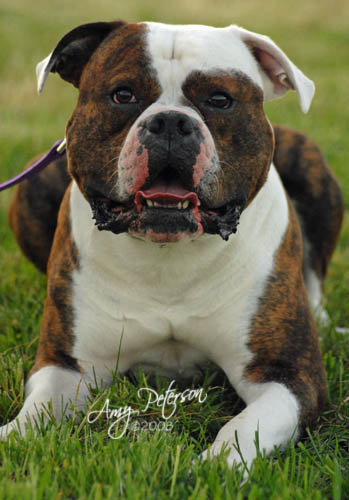
What if my Dog is not UKC Registered?
No problem! You can register your dog with the UKC by filling out and sending in an Application for Single registration. You will need to have registrations from a UKC recognized registry (NKC, ABA, ABRA) and at least to photo of your dog in order to get UKC papers. It usually takes about two weeks to get UKC papers in the mail. UKC papers will allow you to compete in any UKC event including weight pull, obedience and DogSport.
If it is too close to the date or you can not locate your dog's papers you can apply for a temporary listing number from UKC. This temporary number will allow you to compete and earn points for 60 days. You can obtain a UKC TL number by going to the UKC website or clicking the link below and filling out the application. Temporary Listing numbers are usually emailed to you within 24 hours (even sooner if you submit during business hours). This will allow you time to send in your dog's registration application.
General Appearance
The American Bulldog is a powerful, athletic short-coated dog, strongly muscled, and well boned. The body is just slightly longer than tall. The head is large and broad with a wide muzzle. Ears are small to medium in size, high set, and may be drop, semi-prick, rose, or cropped. The tail may be docked or natural. The American Bulldog comes in solid colors, white with colored patches, and brindle. Gender differences are well expressed in this breed, with males typically larger and more muscular than females. Honorable scars resulting from field work are not to be penalized. The American Bulldog should be evaluated as a working dog, and exaggerations or faults should be penalized in proportion to how much they interfere with the dog's ability to work.
Characteristics
The essential characteristics of the American Bulldog are those which enable it to work as a hog and cattle catching dog, and a protector of personal property. These tasks require a powerful, agile, confident dog with a large head and powerful jaws. The American Bulldog is a gentle, loving family companion who is fearless enough to face an angry bull or a human intruder. Note: It is common for young American Bulldogs to be somewhat standoffish with strangers and judges should not penalize this. By the time the dog is around 18 months of age, however, the breed's normal confidence asserts itself.
Disqualifications: Viciousness or extreme shyness; cowardice.
Head
The head is large and broad giving the impression of great power. When viewed from the side, the skull and muzzle are parallel to one another and joined by a well-defined stop. The stop is very deep and abrupt, almost at a right angle with the muzzle. Despite the depth of the stop, the forehead is wider than it is high.
SKULL -- The skull is large, flat, deep, and broad between the ears. Viewed from the top, the skull is square. There is a deep median furrow that diminishes in depth from the stop to the occiput. Cheek muscles are prominent.
MUZZLE -- The muzzle is broad and thick with a very slight taper from the stop to the nose. The length of the muzzle is equal to 35 to 45 percent of the length of the head. Lips are moderately thick but not pendulous. The chin is well defined and must neither overlap the upper lip nor be covered by it.
TEETH -- The American Bulldog has a complete set of large, evenly spaced, white teeth. The preferred bite is undershot with the inside of the lower incisors extending in front of the upper incisors up to ¼ inch. A scissors bite is acceptable. A level bite and extreme undershot bite are considered faults to the degree that the bite interferes with the dog's ability to work. Teeth are not visible when the mouth is closed. Worn teeth or broken teeth are acceptable.
Disqualification: Overshot.
NOSE -- The nose is large with wide, open nostrils. The nose may be any color but darker pigment is preferred.
EYES -- Eyes are medium in size, round, and set well apart. All colors are acceptable but brown is preferred. Haw is not visible. Dark eye rims are preferred.
Faults: Very visible haws.
EARS -- Ears may be cropped but natural ears are preferred. Natural ears are small to medium in size, high set, and may be drop, semi-prick, or rose.
Drop ears: The ears are set high, level with the upper line of the skull, accentuating the skull's width. At the base, the ear is just slightly raised in front and then hangs along the cheek. The tip is slightly rounded. When pulled toward the eye, the ear should not extend past the outside corner of the eye.
Semi-prick ears: Same as drop ears except that only the tips of the ears drop forward.
Rose ears: Rose ears are small and set high on the skull.
Fault: Hound ears.
Neck
The neck is where the American Bulldog exerts power to bring down livestock. The neck must be long enough to exert leverage, but short enough to exert power. The neck is muscular and, at its widest point, is nearly as broad as the head, with a slight arch at the crest, and tapering slightly from shoulders to the head. A slight dewlap is acceptable.
Faults: Neck too short and thick; thin or weak neck.
Forequarters
The shoulders are strong and well muscled. The shoulder blade is well laid back and forms, with the upper arm, an apparent 90-degree angle. The tips of the shoulder blades are set about 2 to 3 finger-widths apart.
FORELEGS - The forelegs are heavily boned and very muscular. The elbows are set on a plane parallel to the body, neither close to the body nor turned out. Viewed from the front, the forelegs are perpendicular to the ground or may, especially in a dog with a very broad chest, incline slightly inward. The pasterns are short, powerful, and slightly sloping when viewed in profile. Viewed from the front, the pasterns are straight.
Body
The chest is deep and moderately wide with ample room for heart and lungs. The ribs are well sprung from the spine and then flatten to form a deep body extending at least to the elbows, or lower in adult dogs. The topline inclines very slightly downward from well-developed withers to a broad, muscular back. The loin is short, broad, and slightly arched, blending into a moderately sloping croup. The flank is moderately tucked up and firm.
Serious faults: Swayback; sloping topline.
Hindquarters
The hindquarters are well muscled and broad. The width and angulation of the hindquarters is in balance with the width and angulation of the forequarters.
HIND LEGS - The thighs are well developed with thick, easily discerned muscles. The lower thighs are muscular and short. Viewed from the side, the rear pasterns are well let down and perpen-dicular to the ground. Viewed from the rear, the rear pasterns are straight and parallel to one another.
Faults: Cowhocks; open hocks.
Serious faults: Narrow or weak hindquarters.
Feet
The feet are round, medium in size, well arched, and tight.
Fault: Splayed feet. The seriousness of this fault is based on the amount of splay in the feet.
Tail
The American Bulldog may have a natural or a docked tail, but the natural tail is preferred. The natural tail is very thick at the base, and tapers to a point. The tail is set low. A "pump handle" tail is preferred but any tail carriage from upright, when the dog is excited, to relaxed between the hocks is acceptable.
Serious Faults: Tail curled over the back; corkscrew tail; upright tail when the dog is relaxed.
Coat
The coat is short, close, and stiff to the touch.
Disqualifications: Long or wavy coat.
Color
Any color, color pattern, or combination of colors is acceptable, except for solid black, solid blue, and tricolor (white with patches of black and tan). Some dark brindle coats may appear black unless examined in very bright light. A buckskin color pattern, where the base of the hair is fawn and the tips are black, may also appear solid black. A judge should not disqualify an American Bulldog for black color unless the dog has been examined in sunlight or other equally bright light.
Disqualifications: Solid black or blue with no white markings; tricolor (white with patches of black and tan).
Height and Weight
The American Bulldog must be sufficiently powerful and agile to chase, catch, and bring down free-ranging livestock. Dogs capable of doing this come in a rather wide range of height and weight. Males are typically larger with heavier bone and more muscle than females. Both sexes, however, should have a well-balanced overall appearance.
Desirable height in a mature male ranges from 22 to 27 inches; in a mature female, from 20 to 25 inches. Desirable weight in a mature male ranges from 75 to 125 pounds; in a mature female, from 60 to 100 pounds.
Gait
When trotting, the gait is effortless, smooth, powerful and well coordinated, showing good reach in front and drive behind. When moving, the backline remains level with only a slight flexing to indicate suppleness. Viewed from any position, legs turn neither in nor out, nor do feet cross or interfere with each other. As speed increases, feet tend to converge toward center line of balance.
Poor movement should be penalized to the degree to which it reduces the American Bulldog's ability to perform the tasks it was bred to do.
Disqualifications
Unilateral or bilateral cryptorchid. Viciousness or extreme shyness. Unilateral or bilateral deafness. Cowardice. Overshot. Long or wavy coat. Albinism. Solid black or blue with no white markings. Tricolor (white with patches of black and tan).
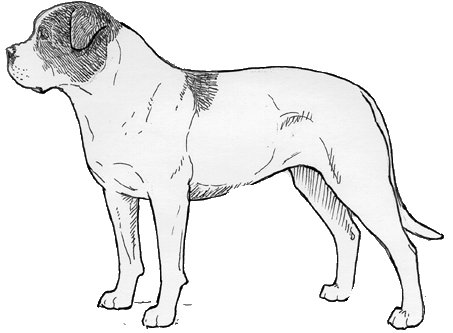
United Kennel Club
American Bulldog
Breed Standard
